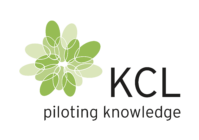Understanding Cellulose Nanofibers and Their Properties
Cellulose nanofibers (CNFs) are a groundbreaking advancement in the field of nanotechnology and biomaterials. Extracted from wood-based raw materials, these fibres are incredibly fine, with diameters close to 4 nm and lengths varying from 200 nm to several micrometres. This unique structure allows CNFs to exhibit full optical transparency when dispersed in water.
One of the most remarkable properties of cellulose nanofibers is their surface functionality. At KCL, we offer CNFs with different surface functionalities, including cationic units, phosphoric acid, and sulphonic acid functionalities. These variations enable the fibres to interact with a wide range of substances, making them highly versatile for various applications.
In addition to their structural and functional properties, CNFs are also known for their high mechanical strength, low density, and biodegradability. These attributes make them an excellent choice for sustainable and high-performance materials in numerous industries.
Methods for Dispersion Stabilization Using Cellulose Nanofibers
Dispersion stabilization is a critical process in many industrial applications, ensuring that particles remain evenly distributed within a medium. Cellulose nanofibers excel in this role due to their ability to form highly viscous solutions in water. This viscosity helps to prevent the settling or aggregation of particles, maintaining a stable dispersion over time.
At KCL, we utilise advanced techniques to incorporate CNFs into various dispersions. The high surface area and unique surface functionalities of our CNFs allow them to interact effectively with different particles, enhancing the stability of the dispersion. This interaction is particularly beneficial in aqueous systems, where CNFs can form a network that entraps particles and prevents them from settling.
Moreover, the optical transparency of CNFs when dispersed in water ensures that they do not interfere with the visual properties of the final product. This is especially important in applications where clarity and appearance are crucial, such as in coatings and films.
Comparative Advantages Over Traditional Stabilizers
Traditional stabilizers, such as synthetic polymers and surfactants, have been widely used for dispersion stabilization. However, they often come with limitations, including environmental concerns, potential toxicity, and limited effectiveness in certain applications. In contrast, cellulose nanofibers offer several distinct advantages.
Firstly, CNFs are derived from renewable resources, making them a more sustainable option compared to synthetic stabilizers. Their biodegradability ensures that they do not contribute to long-term environmental pollution, aligning with the growing demand for eco-friendly materials.
Secondly, the unique surface functionalities of CNFs provide superior stabilization effects. The ability to tailor the surface chemistry of CNFs allows for better compatibility with a wide range of particles and media, resulting in more stable dispersions. Additionally, the high mechanical strength of CNFs enhances the durability of the stabilized dispersions.
Applications in Various Industries
The benefits of cellulose nanofibers for dispersion stabilization extend across multiple industries. In the paper and packaging industry, CNFs are used to create barrier coatings that prevent the diffusion of oxygen, enhancing the shelf life of packaged goods. Their ability to form highly packed assemblies on surfaces makes them ideal for this application.
In the cosmetics and personal care industry, CNFs are utilised to stabilise emulsions and suspensions, ensuring consistent texture and performance of products. Their biocompatibility and non-toxic nature make them suitable for use in formulations that come into direct contact with the skin.
The food and beverage industry also benefits from the use of CNFs. They are used to stabilise food dispersions, such as sauces and dressings, improving their texture and shelf life. The optical transparency of CNFs ensures that they do not alter the appearance of the final product.
Innovative Solutions by KCL
At KCL, we are at the forefront of developing innovative solutions using cellulose nanofibers. Our unique piloting platform and comprehensive laboratory services support product development processes across the diverse value chains of the bioeconomy. We offer a portfolio of CNFs with different surface functionalities, tailored to meet the specific needs of our clients.
Our expertise in nanotechnology and biomaterials allows us to provide high-quality CNFs that deliver exceptional performance in dispersion stabilization. We work closely with our clients to develop customised solutions that address their unique challenges, ensuring optimal results in their applications.
In addition to our product offerings, we provide contract manufacturing services, consultancy, and support for larger co-development projects. Our commitment to confidentiality, expertise, flexibility, and high quality ensures that our clients receive the best possible service and solutions.
Environmental Impact and Sustainability
The environmental impact of materials is a growing concern in today’s world. Cellulose nanofibers offer a sustainable alternative to traditional stabilizers, contributing to the reduction of environmental pollution. Derived from renewable resources, CNFs are biodegradable and do not persist in the environment, making them an eco-friendly choice.
At KCL, we are committed to promoting sustainability through our innovative solutions. By utilising CNFs for dispersion stabilization, we help our clients reduce their reliance on synthetic materials and move towards more sustainable practices. Our focus on sustainability extends to our entire value chain, from raw material sourcing to product development and manufacturing.
In conclusion, the benefits of using cellulose nanofibers for dispersion stabilization are numerous. Their unique properties, superior performance, and environmental sustainability make them an excellent choice for a wide range of applications. At KCL, we are dedicated to providing high-quality CNFs and innovative solutions that meet the evolving needs of our clients and contribute to a more sustainable future.
